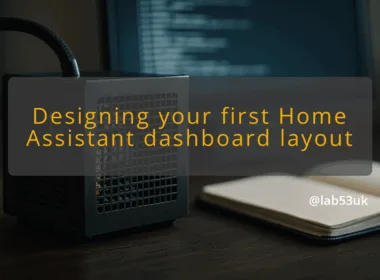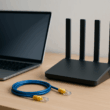Introduction
Imagine this: you’re running late for a meeting, rushing out of the door while wondering if you left the back door unlocked. You fumble around for your keys and then it hits you, what if you could just use your smartphone to lock your home? Well, smart locks like those from Nuki are making that dream a reality, and they might just revolutionise how we think about home security.
Nuki Locks offer a fascinating blend of convenience and advanced security that can completely change your mornings and offer peace of mind when you’re out and about. They connect seamlessly with home automation systems like Home Assistant, allowing for local control of your locking mechanisms. But how does it all work? And how can you set it up? Let’s get into the nitty-gritty of Nuki locks and how to enhance your smart home experience.
Understanding Nuki Locks
So what exactly IS a Nuki Lock? Essentially, it’s a smart lock that allows you to lock and unlock your door using your smartphone, and it also supports a range of access control features. Nuki uses a retrofit system, meaning you can install it on top of your existing deadbolt without the hassle of removing the whole unit. This is particularly handy for UK homes where not everyone wants to do a complete overhaul of their door systems.
Nuki locks employ Bluetooth and Wi-Fi connectivity through devices like the Nuki Bridge. As a result, you can manage your locking system remotely, send digital keys to your friends, and even monitor who’s coming and going. Now, let’s get down to how it integrates with Home Assistant.
Integrating with Home Assistant
To control Nuki Locks through Home Assistant, the Nuki Bridge is essential. This device connects your Nuki Lock to your home’s Wi-Fi network, allowing for seamless communication between your smart lock and your home automation setup. This is no simple plug-and-play job, so here’s how to set it up step-by-step:
- Connect the Nuki Bridge to your Wi-Fi: You’ll need to ensure the Nuki Bridge is set up on your home network.
- Enable Developer Mode: This step is crucial for Home Assistant to discover your Nuki Lock. You’ll need to enable developer mode in your Home Assistant settings.
- Define a Port: Make sure you choose a specific port for your Nuki Lock’s connection. This can typically be done in the Home Assistant interface.
- Create an Access Token: The API token needed can be between 6 to 20 characters long. Be sure to keep it handy, as it’s required for the following configuration steps.
- Configure Home Assistant: Once the above steps are followed, you can either manually configure your Nuki Lock or let Home Assistant auto-discover it. This usually involves following on-screen prompts within the Home Assistant dashboard.
Once set up, you’ll have access to actions such as ‘nuki.lockngo’ for locking/unlocking and ‘nuki.setcontinuousmode’ for enabling or disabling Continuous Mode.
Local Integration vs Cloud Dependence
Now, a crucial point about Nuki Locks is that while they do operate through Wi-Fi and cloud services, using them locally with Home Assistant reduces dependency on external servers. This means faster response times and better reliability, especially in cases where the internet may fail.
For those who love the tech details, Nuki also allows event notifications through ‘nuki_event’, giving you real-time updates on the lock’s status. Integrating with HomeKit, MQTT, and Matter for local control is an option too, providing different layers of flexibility depending on your setup preferences.
Debunking Common Myths
Despite all the advantages smart locks offer, there are common misconceptions that can deter users. Let’s clear the air:
- Myth 1: Smart locks are easily hackable – While nothing is 100% secure, Nuki Locks have strong encryption protocols, making them far more secure than traditional locks.
- Myth 2: They are too complicated to operate – With user-friendly apps and integration options like Home Assistant, controlling a smart lock is easier than flicking a switch.
- Myth 3: Smart locks will drain your batteries quickly – Smart locks like Nuki are designed to run efficiently, and battery life can last several months if monitored regularly.
- Myth 4: They require extensive renovations – As mentioned, Nuki’s retrofit design means you won’t need to tear apart your existing door setup.
- Myth 5: Smart locks are just a fad – With the current trajectory of the smart home market, the demand for smart security solutions is only expected to grow.
Final Thoughts
Implementing a Nuki Lock as part of your smart home setup not only boosts security but also significantly enhances convenience. You can easily forget carrying keys or worrying about who has access to your home. With all the setup steps and considerations laid out, it’s clear that smart locks represent an important trend in home security.
Smart homes are only going to become smarter, and integrating devices like Nuki locks with Home Assistant is a robust step into that future. So if you’re ready to ditch those keys and control your home with just your smartphone, it’s time to take the plunge.







